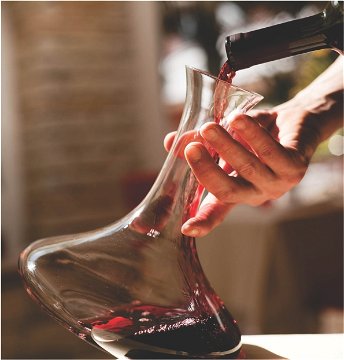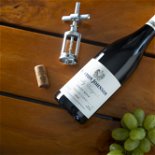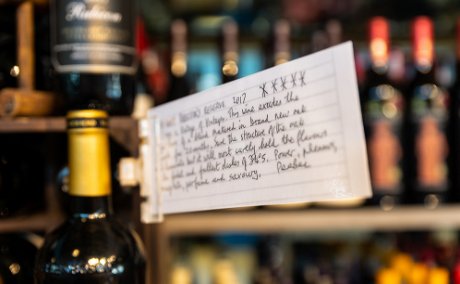Another of our winemaster's insightful looks at some of the more unusual wines in 34 South's collection
Wine decanter or wine aerator - which should I use?

What are the purposes and functions of decanters and aerators? What are the intended results? And should some wines be decanted, and others not?
The main end results of both decanters and aerators is to maximise the contact with oxygen in order to allow the wine to develop more intensive aromas, while at the same time softening the tannins and thereby creating a lighter ethanol taste to the wine through the ‘evaporation’ of alcohol.
Decanters and decanting: pros and cons
Decanters were created to separate the sediment in the bottles of older vintages and non-filtered wines.
By default, the wine aerates, but in a longer and much gentler process.
- This gentler process makes it perfect for older vintages that are more delicate.
- Aeration through decanting is a longer process. Depending on the wine, it can take anything from 20min to 3 hours for sediment to settle from the clear wine
- It is perfect for intensely tannic wines. It is not recommended for lighter wines like pinot noir
- It also increases the temperature of the wine from cellar to serving
- A decanter is less likely to spill wine than many aerators
- Decanters are generally made of glass or crystal and come in interesting shapes. However they are generally fragile, can chip or break easily, and are sometimes not easy to clean because of their shape
- As oxidation takes place over a much longer period, wines can be managed and tested at intervals to ensure serving at the perfect moment
- Younger, lighter wines which don't have sediment don't have to be decanted and if left too long may fall flat in flavour, however they do look stylish in a decanter!
- Decanting is a time-honoured tradition, perfect for older wines, and/or if you want to add some “flair” to a dinner party.
Aerators: pros and cons
Thanks to technology, we now have appliances made for quick aeration, for on-the-spot wine consuming. Created for the sole purpose of increasing oxidation quickly and immediately Aerators allow the wine to “breath”, smoothing and bringing out the aromas and heightening the intended taste of the wine.
- Ideal for younger, “tight’er” or “closed” red wines, they can be used on heavy chardonnays or over chilled white wines, however not recommended for all white wines
- Also great for full bodied reds like cabernet and shiraz. However multiple sources will tell you that wines over 10-15 years should not be aerated as the aged wines delicateness will lose the last fruit flavours left over and could make a wine flat
- It is an immediate process, so no need to wait before enjoying the wine
- Softens tannins and helps to balance the fruit and acid to make the wine flavours shine through
- They are generally easier to store and easier to clean
- Aerators won't address or separate the sediment in an older wine.
- Aerators are imprecise, different wine cultivars and vintages will react differently to forced aeration. So, you do need to be careful if you are not already aware of what the aerator does to the wine
- Not always the most visually appealing product to put on the top of a bottle, but definitely a talking point
In conclusion, aerators are great for quick easy aerating, especially for younger, full-bodied wines. If used on older wines, be careful and test it before serving to friends.
So do I choose a decanter or an aerator?
Ultimately there are three factors to think off when choosing a decanter or an aerator:
- Ease of use - cleaning, easy to handle and time needed for aeration.
- Effectiveness - are you an old vs young, red vs white wine drinker
- Sensory stimulation - plastic vs steel, glass vs crystal, modern vs classic
Different types of decanters and aerators exist on the market. On the decanter side, you have glass or crystal and you can get them in 1000 of different shapes and sizes.
On the aerator side, you have ones you hold over a glass and others which go in the top of the bottle. Some even keep the wine chilled.
There are different designs and spouts, differ materials used to make the item, durability, countries of origin and as always brand names.
Whether you buy a cheaper or a more expensive decanter or aerator, they will ultimately do the same thing: oxidise and aerate the wine. One might take longer, one might break less easily, spill less, but both are guaranteed to impress.
Further Reading
Peter Bishop – PeeBee to us here at 34 South – on the wines he tested for us this month. Visit our wine shop for more of PeeBee’s pithy, entertaining, and always informative wine notes.
As if you need more than one (‘it’s lekker here’)! Here, in no particular order, are ten of our top reasons why you should visit the little town that goois such attitude at our latitude: Knysna, at 34 degrees south, 23 degrees east.
























Share This Post